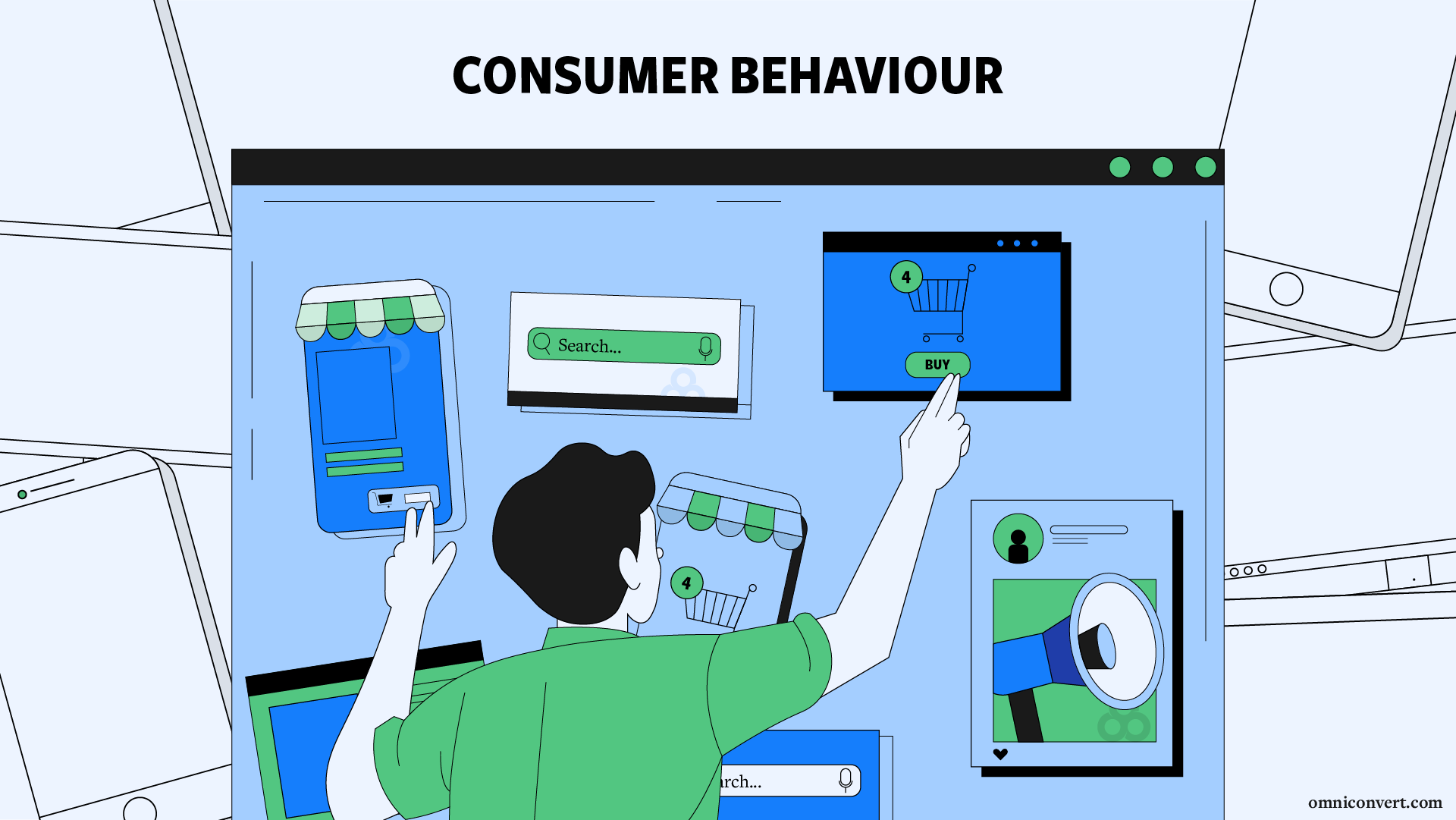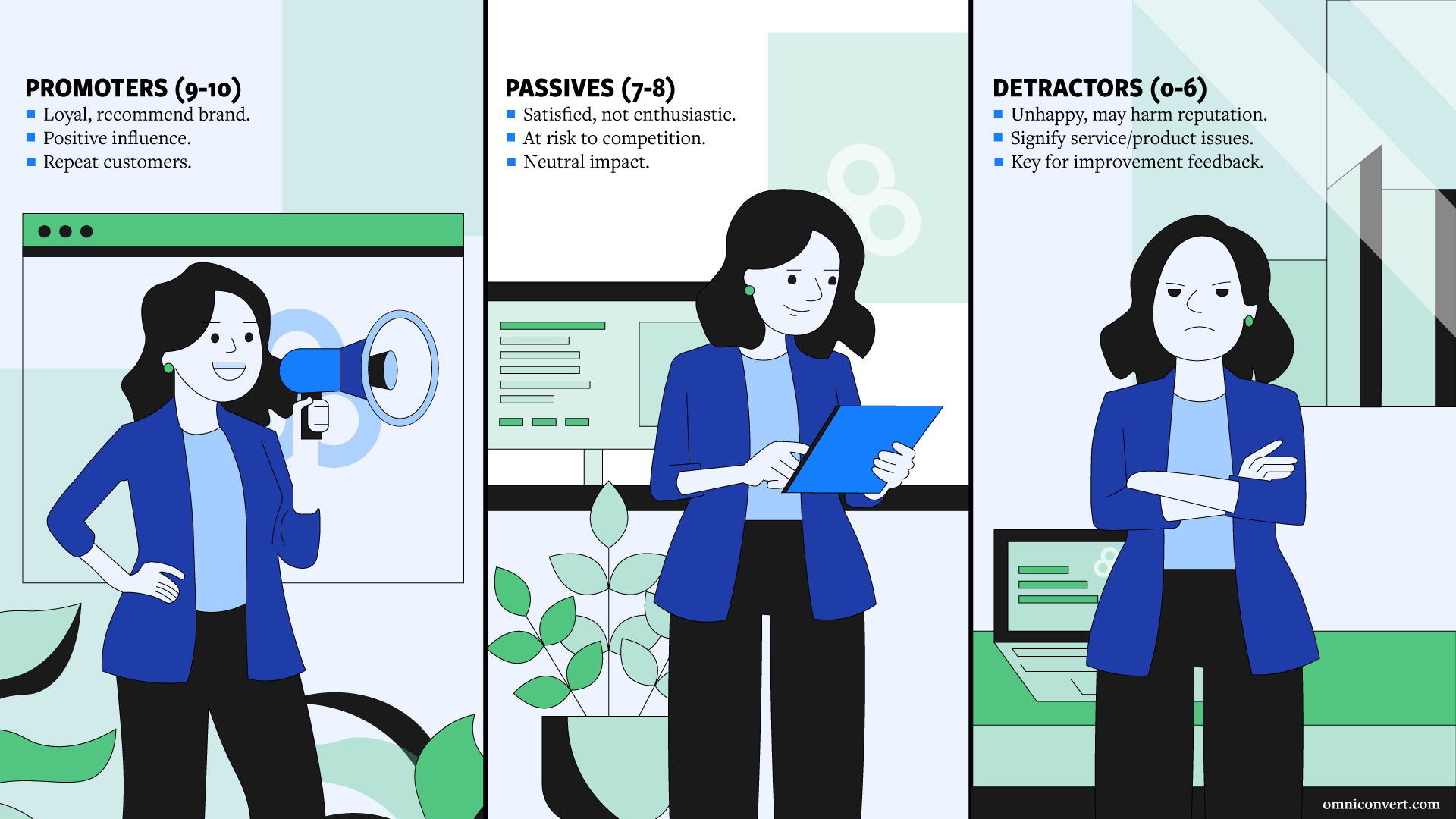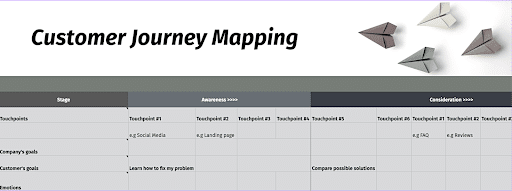Picture this:
You’ve triumphed in driving traffic to your website, a remarkable achievement indeed.
However, even the slightest deviation from your golden ratio can steer you away from your ultimate goal – profits – and destabilize a carefully curated balance.
What’s all the effort for if it’s so unstable?
Truth be told, traffic isn’t as valuable if it doesn’t convert.
And Website conversions aren’t really helping you unless the AOVs outweigh the CAC and newly acquired customers become loyal ones.
Today’s blog article shows you how to crack the code through the critical concept of customer-centricity.
From fragmented customer journeys to data-driven insights, we’ll uncover essential strategies and methodologies to create a unified and holistic customer experience.
Join us on this enlightening journey revealing how to deliver exceptional experiences that truly resonate with your customers.
Understanding the Cost of Fragmented Customer Journeys
The mirage of spending more on acquisition is seductive.
Ads lead to eyeballs, which lead to visitors.
Visitors should turn into shoppers, and finally, revenue.

However – is revenue truly all that matters?
Don’t be fooled.
Widespread “growth” metrics, such as the Return on Investment (ROI) or Return on Ad Spend (ROAS), don’t tell the whole story.
Measuring growth against ROI or ROAS leads to a hyper-focus on revenue, neglecting the ultimate business goal: profits.
When blindly chasing higher ROAS & ROI turns into a spending manager, with little input into the bigger picture of company profitability and customer satisfaction downstream.
In short, chasing quick wins will not help with long-term, sustainable growth.
What truly matters is creating cohesive, delightful customer journeys that lead to sustained success.
And that’s the actual cost of fragmented customer journeys:
Prioritizing short-sighted metrics over long-term prosperity and customer happiness will make you lose your way, exposing your business to grim scenarios when market shifts hit.
Let’s analyze the cost of fragmented journeys more practically.
Imagine you own an eComm business that specializes in custom-made shoes.
Recently, you launched a marketing campaign with a budget of $10,000 to drive traffic to your website and boost sales.
However, without a cohesive strategy, you allocated the budget across various ad channels:
- $4,000 on social media ads
- $3,000 on search engine ads
- $3,000 on influencer partnerships
This fragmented approach resulted in an inconsistent customer experience.
Potential customers received mixed messages across different platforms, causing confusion and hesitancy in purchasing.
Consequently, conversion rates suffered as potential customers dropped off at each journey stage.
For instance, your social media ads attracted 10,000 clicks, but only 2% led to a purchase.
Similarly, the conversion rates for search engine ads and influencer partnerships were 3% and 4%, respectively.
With proper customer journey mapping before launching the campaign, you can experience revenue opportunities.
While your total revenue from the three channels combined was $50,000, a more cohesive strategy could have led to $90,000 in revenue.
In this hypothetical example, the cost of fragmented customer journeys amounts to $40,000—the difference between what you could have earned with a cohesive approach and what you earned with the fragmented one.

The Benefits of a Holistic Customer Behaviour View
Even if real-life situations aren’t as neatly wrapped as our hypothetical scenario, one can’t deny the benefits of a more holistic view of customer behavior.
If your entire company aligns around the needs and experiences of your customers, you’re actively including your customers in your strategy meetings.
Evidently, you aren’t sending out invitations or asking customers to weigh in on next quarter’s budget.
Instead, you leverage the valuable data and insights gathered from various sources, such as Jobs to be Done interviews and NPS scores, thus enabling your business to become customer-centric truly.
Customer journey mapping plays a pivotal role in this shift.
Customer journey analysis & optimization helps create more relevant and personalized customer experiences for everyone, especially when combined with a focus on Customer Lifetime Value.
It allows you to identify what’s broken in the customer journey, such as product issues, a broken user experience, shipping delays, or unsatisfactory customer service.
Armed with this knowledge, you can devise strategies to fix these issues and move forward in a way that resonates with your customers.
Moreover, customer journey mapping lets you understand what your customers truly want. Consequently, you’ll avoid wasting resources on initiatives that don’t resonate with your core audience.
Ultimately, a holistic customer journey view empowers your business to build meaningful connections with your customers, fueling their love for your brand and products.
More than 50% of consumers will abandon a brand without blinking an eye after a single bad experience. Can you afford to take that chance?
On the other side of the coin, enhanced customer experiences support your business’s scalability, steering you clear from investing resources in strategies with little return.
Key Takeaway: a customer-centric approach, guided by journey mapping and data-driven insights, paves the way for sustained growth and success.
Analyzing Customer Behavior and Preferences

Let’s be honest; your road is most likely paved with good intentions, and you have nothing against giving customers what they truly want.
The problems start when you figure out what exactly your customers’ preferences are.
While you can’t read their mind, you can apply various methodologies to analyze and understand customer behavior and preferences.
However, this analysis is a multifaceted process that involves leveraging RFM segmentation, buying habits, Net Promoter Score (NPS), and Jobs to Be Done (JTBD) interviews.
Let’s take it one step at a time.
RFM Segmentation
RFM segmentation involves categorizing customers based on their past interactions with your business:
- Recency: how recently a customer purchased or engaged with your brand.
- Frequency: how often a customer purchases from or interacts with your brand.
- Monetary Value: the total money a customer has spent on your products or services.
The insights from RFM segmentation help identify distinct customer segments based on their purchasing behavior and value to your business.
When building your customer journey map, you can incorporate these segments to understand how different groups of customers interact with your brand.
For example:
- High RFM Score Customers (Soulmates)
These loyal and valuable customers might be prominent in the “Advocacy” stage of the journey.
They actively promote your brand, share their success stories, and refer friends, contributing to word-of-mouth marketing.
- Medium RFM Score Customers (Active)
The journey map can identify areas where these customers need more attention and nurturing, leading to revenue optimization.
Understanding their touchpoints and interactions can help devise retargeting strategies to convert them into Promoters.
- Low RFM Score Customers (About to Dump You)
Journey mapping for detractors highlights stages where these customers are likely to churn or show dissatisfaction.
According to the value they bring to the brand, they prioritize addressing their pain points and improving their experiences. Consequently, you will work towards converting them into more satisfied customers.
Buying Habits
This branch of customer behavior tracking refers to understanding customers’ purchase patterns and preferences.
Tracking buying habits includes examining what products or services they frequently purchase, the timing of their purchases, and any seasonal trends or fluctuations.
This intelligence helps you spot popular products, customize marketing campaigns, and optimize inventory management to effectively meet customer demands.
Moreover, analyzing buying habits informs the journey map about customers’ typical pathways to make purchases.
It lets you understand the triggers leading to conversions and their preferred channels.
For example, in the “awareness” stage, you’ll identify the marketing channels and touchpoints customers use to discover your products.
You can then double down on these insights to optimize your marketing efforts for the best possible brand awareness and engagement.
Following the same logic, in the “purchase” stage, you’ll identify the timing of purchases and any seasonal trends.
This insight helps you optimize inventory and prepare for a more robust customer stream, ensuring smooth transaction processes.
Net Promoter Score (NPS)
The NPS measures customer loyalty and satisfaction, dividing customers into three groups:
- Promoters (9-10): Loyal customers who will likely recommend your business.
- Passives (7-8): Satisfied customers but less likely to actively promote your brand.
- Detractors (0-6): Dissatisfied customers who may spread negative feedback about your brand.

Identifying the reasons behind promoter and detractor responses will highlight aspects customers appreciate – for example, your various shipping options.
At the same time, you’ll uncover where you need to up your game and improve your processes – such as the product page or the checkout process.
For example, detractor feedback can highlight specific pain points or issues customers face after purchasing. These insights can inform improvements to customer support and after-sales services.
Jobs to Be Done (JTBD) Interviews
JTBD interviews delve into the functional and emotional aspects of why customers “hire” your products or services.
After in-depth customer interviews, you will genuinely understand customers’ underlying motivations and needs.
JTBD interviews reveal the context in which customers use your offerings and help identify opportunities to improve existing products or develop new ones that better address their needs.
Moreover, understanding the functional and emotional aspects of customers’ needs helps you craft more compelling marketing messages that resonate with their desires.
Finally, JTBD insights can guide you in crafting personalized follow-up communication and after-sales support. This customized approach, catering to each customer’s specific needs, leads to higher satisfaction and Lifetime Value.
As you can see, combining insights from RFM segmentation, buying habits, NPS, and JTBD interviews, creates a comprehensive picture of your customer’s behavior and preferences.
This picture then “colors” all aspects of your business, including marketing strategies, product development, customer service enhancements, and overall customer experience improvements.
Key Takeaway: a well-crafted and comprehensive customer journey map is a game-changer.
It empowers you to craft impactful and engaging experiences that forge strong customer relationships and fuel remarkable business growth.
Ultimately, it’s a powerful tool that puts you in the driver’s seat of customer satisfaction and loyalty.
Overcoming Fragmentation Challenges
To create and stick to a unified customer experience long-term, you must first overcome the fragmentation challenges you’ll face.
It’s only natural to stumble upon some issues along the way.
The process is similar to building a modest house and later attempting to transform it into an elaborate mansion.
Without an initial vision of a grand two-story, 3-bedroom, 2-baths villa, it might be a struggle to expand the foundation, devise plumbing solutions, and redesign the floor plan.

When it comes to your business, you will need a shift towards a customer-centric approach.
Rather than just focusing on selling products, customer-centric companies understand that customers seek solutions to their problems and “hire” products to fulfill specific jobs.
There are specific steps you can take to overcome fragmentation challenges:
Embrace Customer-Centricity
You need to adopt a customer-centric mindset, acknowledging your customers’ dilemmas and seeking ways to address them.
Understanding customer needs and desires and a proven willingness to listen and comprehend customers’ perspectives becomes your priority.
Look Beyond Traditional Metrics
Relying solely on narrow P&L statements may hinder a comprehensive understanding of the customer journey.
Customer-centric companies broaden their scope by considering various metrics, such as Customer Lifetime Value (CLV), customer satisfaction scores, and Net Promoter Score (NPS).
These metrics provide valuable insights into customer behavior and help shape your approach.
Eliminate Silos and Foster Collaboration
Customer Journey Mapping is most effective when the company has broken down internal silos and fosters collaboration across departments.
By involving every part of the organization in the customer journey, teams can work together towards a collective strategy that aligns with customer needs and aspirations.
Utilize Comprehensive Data and Insights
Remember to gather and share insights from various sources, including customer research, financial modeling, RFM segmentation, JTBD interviews, and NPS scoring. To make things easier and more accessible, you can aggregate all data silos into a single customer data platform.
You need diverse data points to paint a holistic picture of the consumer journey. This approach reveals pain points, opportunities for improvement, and areas to create better experiences and increase customer engagement.
Emphasize Jobs to Be Done Interviews
JTBD interviews are compelling tools for understanding why customers “hire” products and services.
These interviews delve into customer needs’ functional and emotional aspects, allowing you to tailor your offerings to address specific customer jobs.
Continuously Seek Customer Feedback
Beyond the initial JTBD interviews, customer feedback should be an ongoing process.
You can leverage additional surveys that build on the JTBD results to gain a deeper understanding of customer satisfaction and customers’ evolving preferences.
Key Takeaway: embracing a customer-centric approach, diversifying metrics, breaking down silos, and considering comprehensive data and insights are essential steps to conquer fragmentation challenges.
By genuinely understanding customer needs and incorporating their journeys into your company’s strategies, you’ll soar in delivering extraordinary experiences that exceed customer expectations and nurture enduring relationships.
Putting your customers at the heart of everything you do is the key to sustainable success in the competitive business landscape.
Building a Unified Customer Experience
Now that we covered the importance of prioritizing customer-centricity, let’s take a closer look at the steps involved in building a unified and holistic customer journey.
This journey’s pillar is a visual customer journey map that illustrates how customers interact with your company across various touchpoints.

This map keeps your company accountable for delivering a seamless and exceptional customer experience.
Start by gathering insights from various sources, such as customer research, JTBD interviews, financial modeling, and NPS scoring.
These insights will uncover and identify customer pain points and issues throughout their journey.
For example, if ordering a product requires too much customer effort and the shopping experience is too complicated, you’ll face high churn rates – these issues must be fixed.
So, the journey map becomes a blueprint for solving these problems and enhancing the overall customer experience.
Remember that a one-size-fits-all approach doesn’t work here.
The process requires identifying and mapping out experiences for different customer profiles.
To do so, you need to analyze data from various customer segments to understand their unique paths, needs, and expectations.
If before you were guessing or following the latest trends, you can now step into your customers’ shoes and truly understand their journeys with your product.
Additionally, you can use the customer journey map to compare pre-purchase wishes with post-purchase experiences.
Basically, you determine whether or not you respect the “under-promise/ over-deliver” principle. If not, you can find areas for improvement and deliver on customer expectations.
The beauty of the visual customer journey map is that it serves as an ongoing reference point.
You can revisit it during slow sales or when you notice a shift in customer issues, complaints, returns, or losses.
Keeping your customer journey map up-to-date allows you to proactively address emerging challenges and continuously improve the customer experience.
Key Takeaway: Building a unified and holistic customer journey is about creating a visual map that captures every touchpoint, analyzing data from different customer segments, and consistently revisiting the map to meet customer needs and expectations.
When you prioritize customer journey analytics, you’ll cultivate stronger customer relationships and fuel sustainable growth for your business.
So, always keep sight of your customer’s journey, and watch your success soar as you put them at the heart of your every move.
Implementing a Holistic Approach – Case study
How does it all look and feel in practice?
Let’s look at one of Omniconvert’s clients and how we applied the JTBD methodology to create different and unified customer journeys for various customer segments.
First, you need to know that we’re talking about an online retailer that sells turmeric shots.
Data analysis revealed that younger customers use the shots for recovery and energy, typically discovering the product on social media, watching content on YouTube, and purchasing through the online store.
On the other hand, older customers treat the product like a daily vitamin, reading the company’s blog, signing up for the newsletter, and then trying out the product. They are more likely to refer friends and engage in sharing content.
Mapping out these experiences for different customer types ensured all efforts were tailored to customers’ preferences.
The revelation of these varying use cases shed new light on the turmeric shots’ purpose.
Customers were not just using them for specific events; instead, they incorporated the shots into their daily routines for pain relief, energy, and recovery, significantly improving their quality of life.
This profound insight, directly sourced from their customers, had a remarkable impact on their revenue, particularly when assessing the Recency and Frequency of purchases.
The client was pleased with this discovery as it confirmed the effectiveness of their existing marketing strategy aimed at connecting with young athletes.
However, the revelation went beyond that, revealing an untapped customer base they had not previously recognized.
With this newfound knowledge, the client had a wide-open opportunity to market in this unexplored direction.
Additionally, this insight prompted the client to reevaluate their customer onboarding approach.
Establishing a sense of continuity and connection with customers during onboarding became crucial.
For instance, if most middle-aged customers used the product as a daily vitamin, but the onboarding messages focused on post-event recovery for young athletes, a more profound connection might be missed.
Armed with this understanding, the client was eager to improve their onboarding strategies and cultivate new relationships with high RFM groups in a previously unknown customer segment.
Key Takeaway: by analyzing customer data and conducting age-specific usage patterns, our client discovered untapped market segments and a deeper understanding of how their turmeric shots served varying needs.
Armed with this valuable knowledge, they were able to tailor their marketing efforts and create a more personalized onboarding experience, leading to improved customer connections and a notable boost in revenue.
Listen to your customers, leverage data-driven insights, and adapt your strategies accordingly to unlock hidden opportunities and foster stronger customer relationships.
Wrap Up
As we reach the end, remember the single fundamental truth in eComm & Retail: your customers are the heart and soul of your business.
Embrace their needs, understand their desires, and cater to their dreams.
While customers aren’t your friends, and their patronage is conditioned to the effectiveness of your strategies, they can still become your fiercest supporters.
Prioritize their experience and break down the barriers of fragmentation to pave the way for lasting connections and remarkable growth.
Good luck!
Frequently Asked Questions about Customer Journey Mapping
What Are the Disadvantages of Customer Journey Mapping?
Customer Journey Mapping can be time-consuming and resource-intensive, requiring significant efforts to collect and analyze data.
Additionally, creating an accurate map that represents all customer segments and their diverse behaviors can be challenging.
If not regularly updated, customer journey maps may become outdated and less effective in reflecting evolving customer preferences.
Why Would a Business Create Multiple Customer Journey Maps?
A business might create multiple customer journey maps to cater to different customer segments or touchpoints.
Customer behaviors and preferences can vary significantly among diverse groups, such as age, location, or purchasing behavior.
By developing individualized maps, businesses can tailor their strategies to meet the specific needs and expectations of each segment, leading to more personalized and effective customer experiences.
Why Is the Customer Journey Important?
The customer journey is crucial as it offers a comprehensive view of the entire customer experience, from initial awareness to post-purchase interactions. Understanding this journey helps businesses identify pain points, optimize touchpoints, and enhance overall customer satisfaction.
A positive and seamless customer journey fosters loyalty, repeat business, and positive word-of-mouth, ultimately driving business growth.
Why Does Customer Journey Matter to a Retailer?
For retailers, the customer journey holds immense significance as it directly impacts sales and customer retention. By mapping out the journey, retailers can identify opportunities to enhance the shopping experience, improve product displays, and optimize marketing efforts.
A well-crafted customer journey can lead to increased customer loyalty, higher conversion rates, and greater revenue for retailers.
What Is a Holistic Approach to Consumer Behavior?
A holistic approach to consumer behavior involves considering all factors that influence a customer’s decision-making process. This includes understanding not only the rational aspects but also the emotional and psychological elements that drive consumer choices.
By examining the complete picture, businesses can develop more insightful strategies that resonate with customers on a deeper level.
What Is a Holistic Customer View?
A holistic customer view refers to a comprehensive understanding of customers that goes beyond transactional data. It involves combining various data sources, such as demographics, behavior, preferences, and feedback, to create a detailed profile of each customer.
With a holistic view, businesses can tailor their offerings and interactions to meet individual needs, fostering stronger customer relationships.
What Determines Consumer Behavior and Preferences?
Customer behavior and preferences are shaped by a combination of factors, including personal preferences, previous experiences, cultural influences, social norms, and peer recommendations.
Additionally, external factors like economic conditions and technological advancements can also influence customer choices.
Understanding these determinants empowers businesses to create targeted strategies that resonate with their target audience.